Conditioners: varieties, brands, choice, use
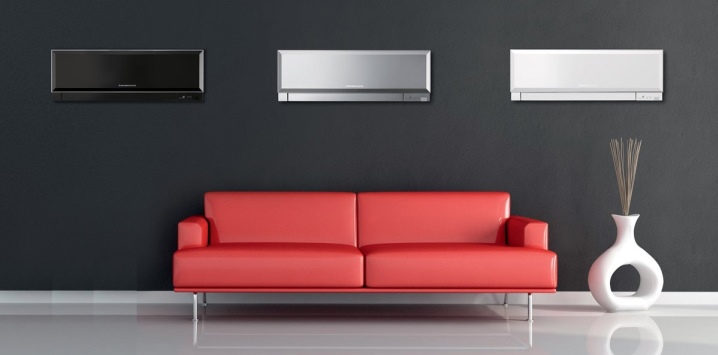
Most people's knowledge of conditioning technology is more than superficial. Usually they boil down to the fact that these are "such boxes that cool and refresh the air." However, it is very important to understand this topic, if only in order to make the right choice and operate the equipment normally.
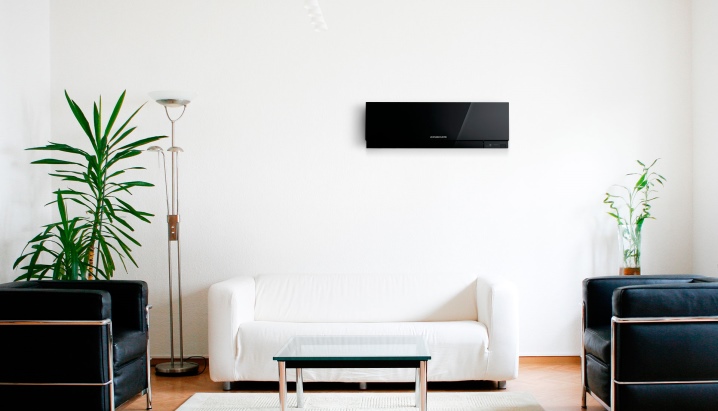
Purpose and principle of operation
The main purpose of using the air conditioner is to improve the indoor climate. Thanks to ventilation, not only a targeted change in the air temperature is provided, but also its equalization in different parts of the room. When the device operates in the fan heater mode, along with the pumping of air masses, an electric heater is used. As a result, the air at the outlet is hotter than at the inlet.
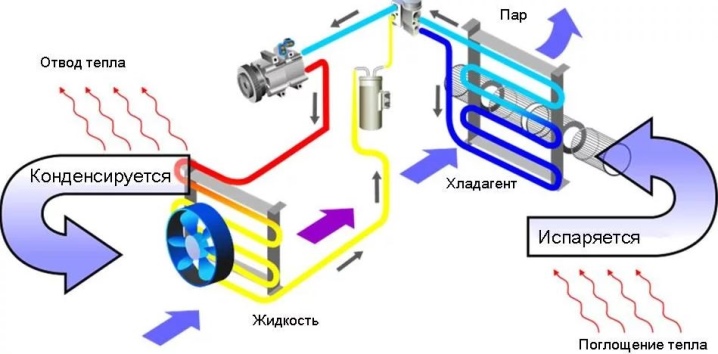
Heating is carried out until the air reaches the set temperature bar. It is determined by a special sensor. Such a sensor is placed strictly on the body, where the air movement initiated by the apparatus does not reach. Therefore, even such a "trifle" as the type of sensor and its exact location is calculated very accurately by the designers. In water and freon air conditioners, the role of automation is the same.
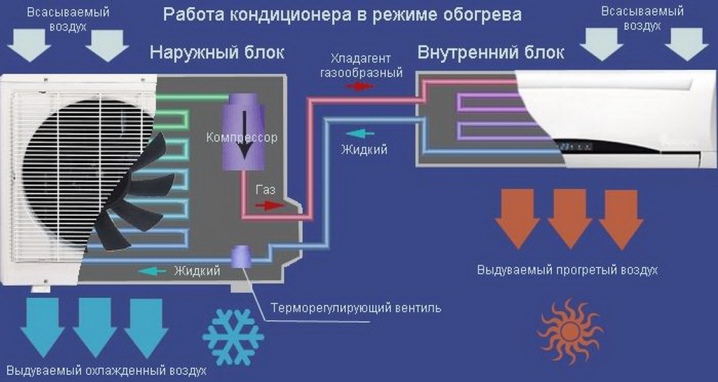
It performs the following functions:
- includes the air conditioning device as a whole;
- turns it off as needed;
- starts and stops the electric air heater;
- monitors that the temperature is maintained at a given level.
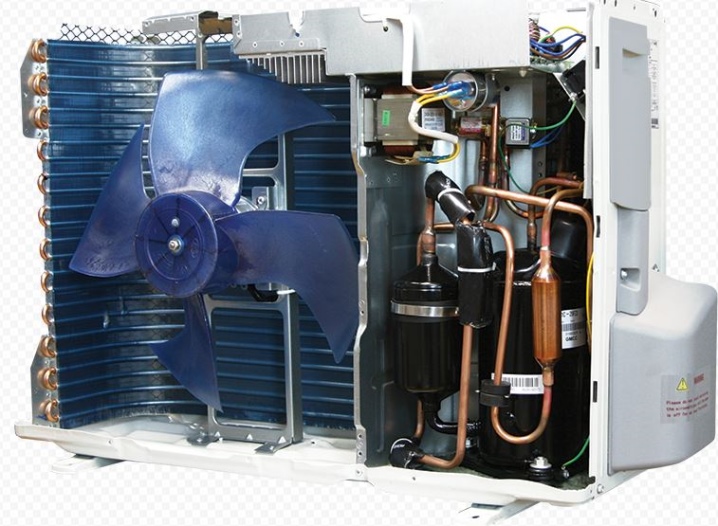
The cooling mode is realized by means of a compressor. The evaporator is cooled below the freezing point of water during operation of the device. That is why the air passing through this device is cooled. It is important to consider that all components are connected using copper pipes. A refrigerant circulates through them (most often a combination of freon with compressor oil, less often water or other substances).
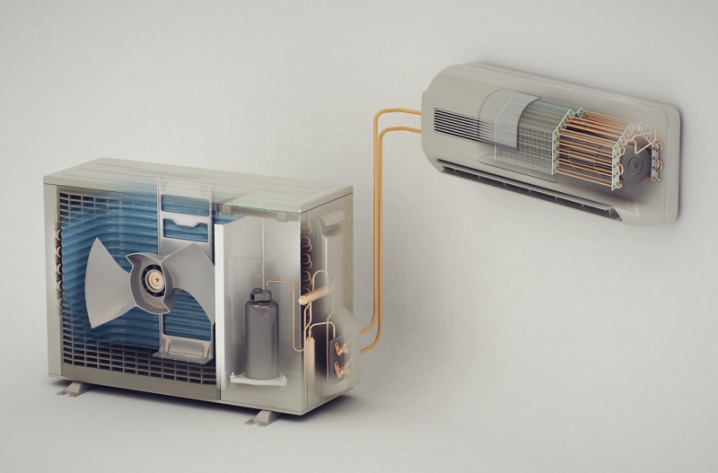
The freon type works for cooling as follows:
- the compressor inlet receives a portion of gaseous freon;
- in a compressor, it is compressed by an average of 5 times and warms up to 70-90 degrees;
- then the gas passes into the condenser;
- since the condenser is subject to intense blowing, there the freon is cooled and liquefied, releasing heat;
- air touching the surface of the condenser carries away this heat;
- then liquid compressed freon, heated by 10-20 degrees more than in the room, turns out to be in the temperature regulating valve;
- there the gas becomes less dense and cools, partially evaporates;
- the liquid-gaseous mixture, having lost pressure, passes into the evaporator;
- there comes the turn of the transition to the gas phase with the removal of heat;
- then the resulting gas enters the compressor again, and the whole cycle is repeated from the beginning.
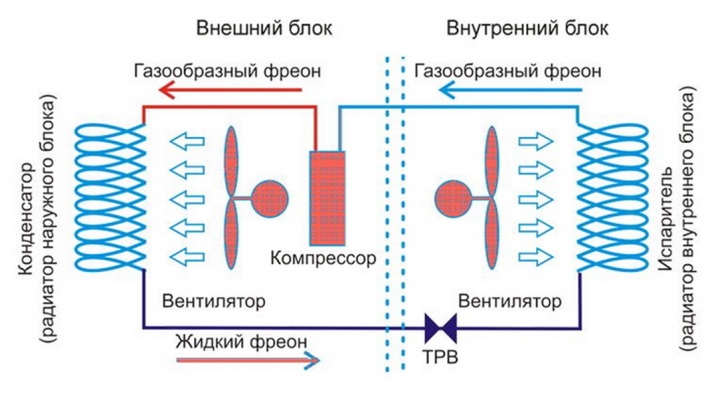
This principle of operation is not affected by:
- nor the type of device execution;
- no manufacturer's brand;
- no additional devices;
- no dimensions;
- nor the presence or absence of a street block in addition to the main body.
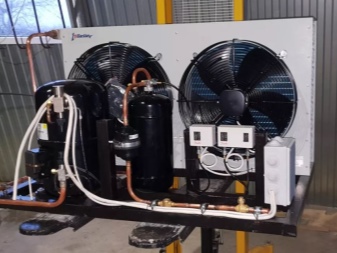
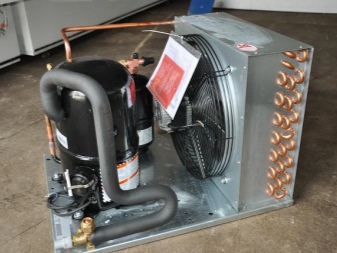
Benefit and harm
For health, the undoubted advantage of a home air conditioner is that it allows you to maintain a microclimate at approximately the same level. The effect of heat and stuffiness in the room is excluded. Meanwhile, heatstroke is not just a few wasted hours, a headache and a short-term feeling of weakness.It has been proven that this condition also leads to negative consequences for the brain as a whole.
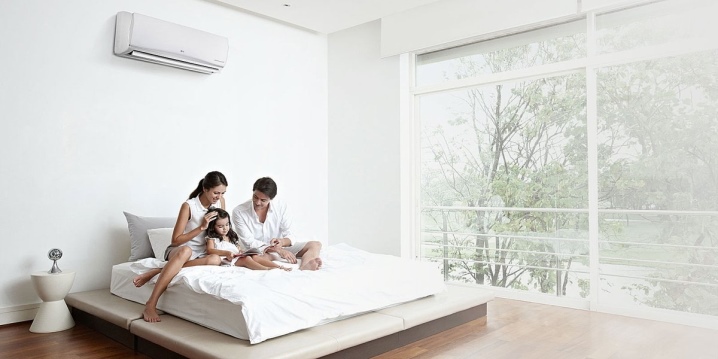
Of course, once it may turn out to be uncritical - but we must remember that the brain can suffer from other reasons. Negative effects accumulate over time, add up or even multiply.
Besides, lowering the air temperature also reduces the risk of dehydration, as the intensity of sweating decreases... It was noted that in rooms equipped with good air conditioners, work productivity is significantly higher than in places where there is no climatic equipment. A tangible difference manifests itself in physical and intellectual work, in production activities and in household chores equally. In addition to its direct effect, conditioning improves sleep quality - another problem common in modern life.
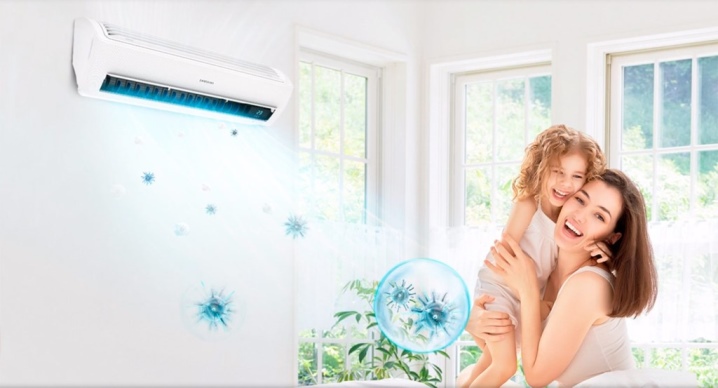
Decent air conditioning systems have been found to help improve air performance by stopping the spread of:
- specks of dust;
- flower pollen;
- other fine particles and allergens;
- mold.
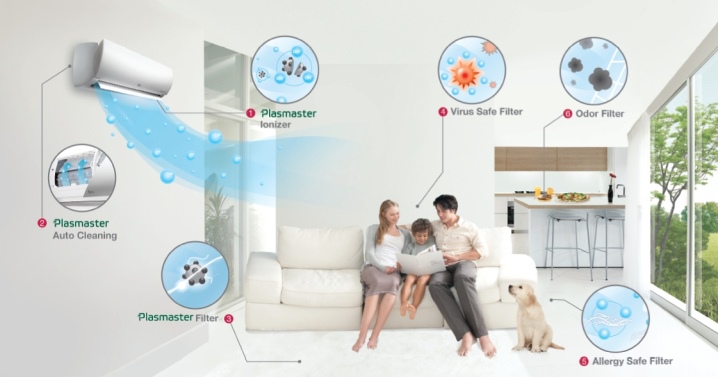
Therefore, the risk of allergic and asthmatic manifestations is reduced. The risk of respiratory diseases of any kind is reduced, and if they do appear, they will be weaker. Important: this applies only to the case when the climatic technology is used correctly and rationally. But air conditioners also have objective disadvantages, which are also important to remember. Where such equipment works constantly, one may encounter drying out and mechanical irritation of the mucous membranes.

There is also sometimes not only a feeling of dryness and tightness of the skin, but also harmful consequences for its organic state. Sudden changes in temperature (when they enter an air-conditioned room from a hot street) can, if not provoke a cold, then aggravate its course. Therefore, it is necessary to regulate the temperature smoothly and not to abuse the cooling function. If the air conditioner does not have the function of humidifying the air, it dries out. Therefore, the danger of damage to the ear, throat, nose and even the eye with dangerous infections increases.

Climatic technology without regular cleaning becomes a place of constant concentration of pathological microorganisms of various types. It is undesirable to use air conditioning systems where there is no conventional ventilation, or where it is not built correctly. Even the best air conditioners are, among other things, impractical during the off-season. In spring and autumn, it is extremely difficult to find the optimal regime for them - especially given the instability of the weather. Finally, the cheapest modifications can generate a lot of noise.
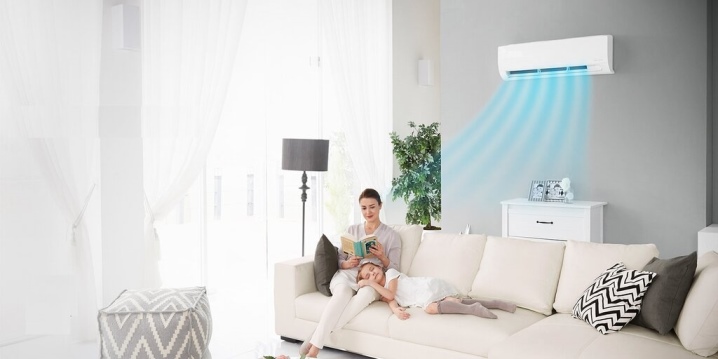
Types and their structure
First of all, it is worthwhile to understand that air conditioners are:
- household;
- commercial;
- industrial grade.
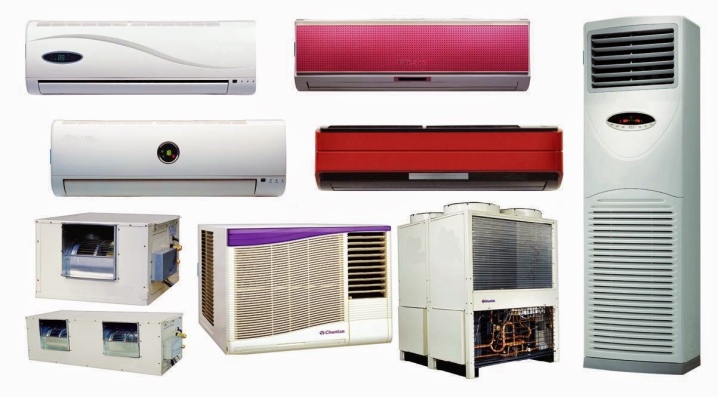
Since the second and third groups are acquired and debugged by professionals in their respective fields, the focus should be on the first category. The indoor monoblock - which follows from the name itself - has only one working unit. Such devices can be placed on windows and rooftops. The arrangement of all parts in a single housing simplifies the creation of the device and lowers its cost. As for the split system, this type of stationary apparatus always includes a couple of units.
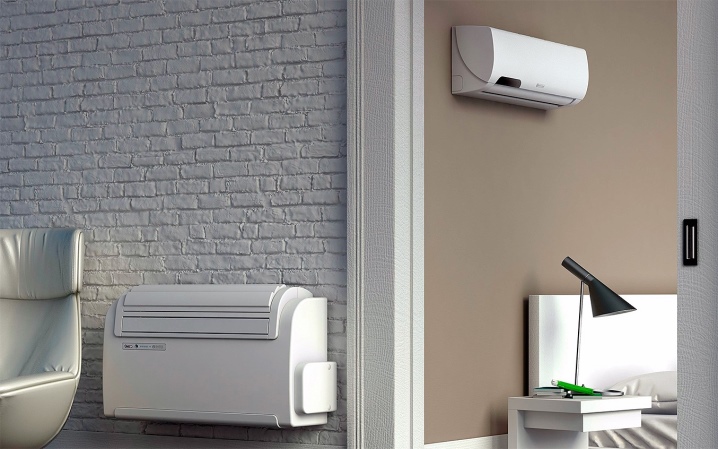
This group may include:
- wall-mounted;
- channel;
- cassette;
- some other categories of air conditioners.
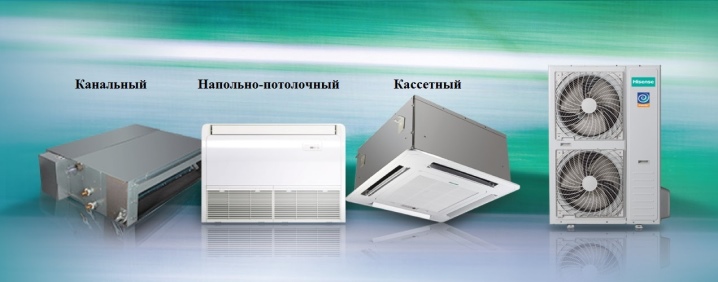
Between the inner and outer parts, along with the copper pipes supplying freon, an electric cable is also laid. The loudest and most voluminous block is taken out of the room, which simplifies the work. The inner part can be put almost anywhere, anywhere. Any split system is now equipped with remote controls by default and can be adjusted with an accuracy of 1 degree. Timers and regulators of the direction of air jets are optionally used.
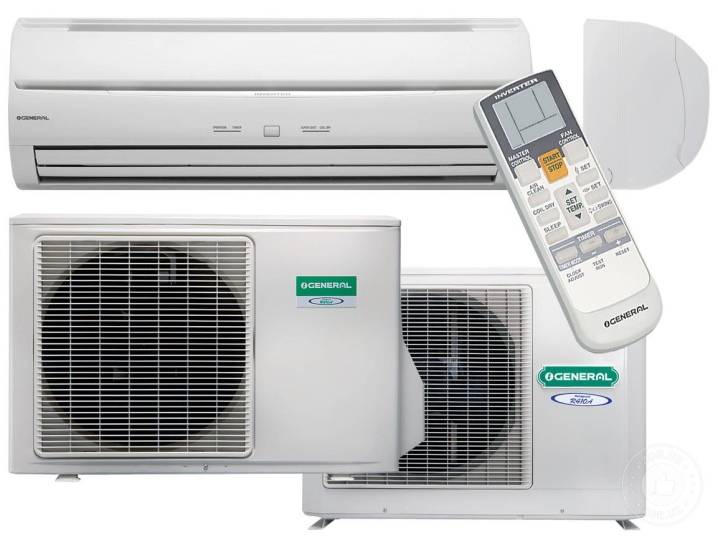
There are a variety of modifications among split systems:
- wall-mounted;
- ceiling;
- columnar;
- channel-based;
- in cassette format.
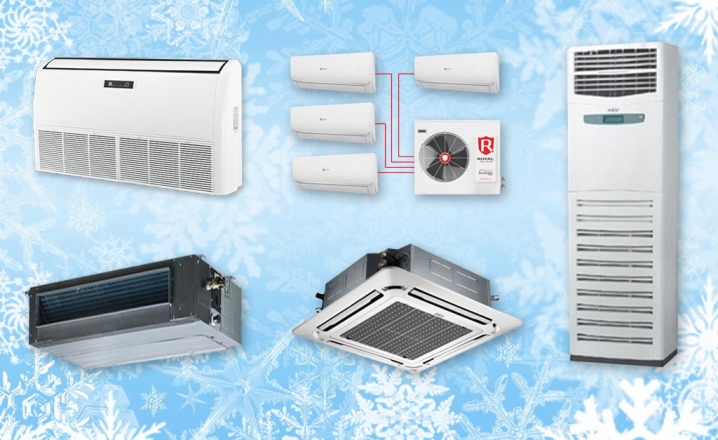
The multi-split system differs from the usual one only in that instead of one internal element, 2-5 units or even more are connected to one external one. The control of each unit is usually autonomous - and not only its heat output may differ, but also the execution format. The classic type of air conditioner is wall-mounted - and it is its device that should be considered for a start. In addition to the compressor driven by an integrated electric motor, the design may include:
- 4-way valve;
- control electronic board;
- fan (responsible for creating the required air flow);
- capacitor;
- filter that protects the freon system;
- nipple-based connections (allowing pipe attachment);
- protective cover.
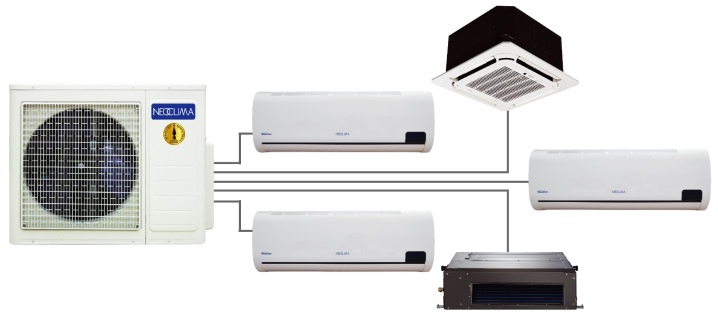
In general, ceiling-mounted and floor-standing devices have a similar design. Only models with special characteristics differ in one way or another. The column device, due to its shape, is not attached to the wall, but to the ceiling of the basement or interfloor space. In fact, such systems are always floor-standing. Cooled or heated air is supplied to the ceiling, and from there it is already distributed throughout the room. Important: the column technique is designed only for rooms no larger than 175 sq. m.
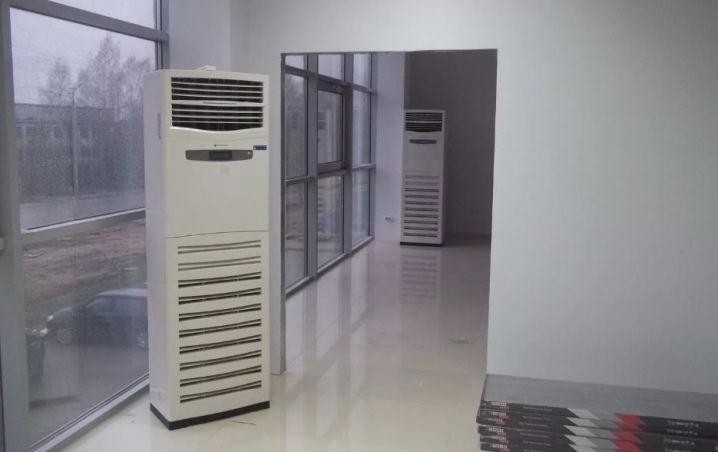
Semi-industrial split systems are usually called ducted air conditioners. But the installation is not carried out on the wall, but as part of the air duct complex. The design of the outer component does not differ from the usual split type. As for the cassette air conditioning equipment, this is also a semi-industrial category. Typically, an indoor operating unit is built into a false ceiling. Important: when using cassette and duct air conditioners, any ceilings, except for suspended ones, cannot be used.
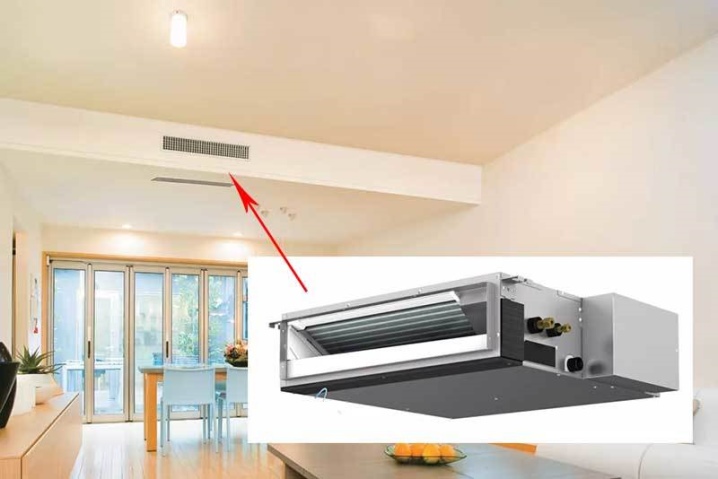
In the distant past, window modifications were very popular, but the demand for them has long fallen - and now only a few companies have such equipment in the assortment. The peculiarity of the device is that it must be mounted by cutting a rectangular recess in the glass or a not too thin wall. The main part of the air conditioning unit is brought out, and only some part of the monoblock with a decorative panel is left in the room.
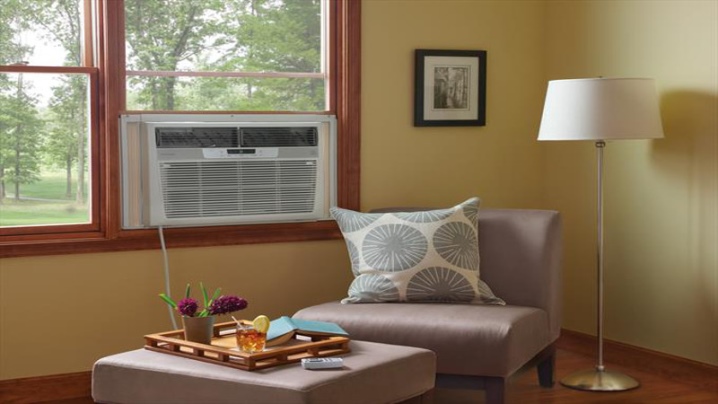
There is no additional need to characterize heated models. They can belong to any other of the listed types and differ only in the presence of a heating element.
As for inverter models, this is the trade name for machines with motors that can correct the rotational frequency. Inverting - converting AC to DC, and then back to AC, but with the required frequency. The adjustment often raises the speed up to 3000 turns per minute or even higher, as a result of which the productivity in both heat and cold is significantly increased.
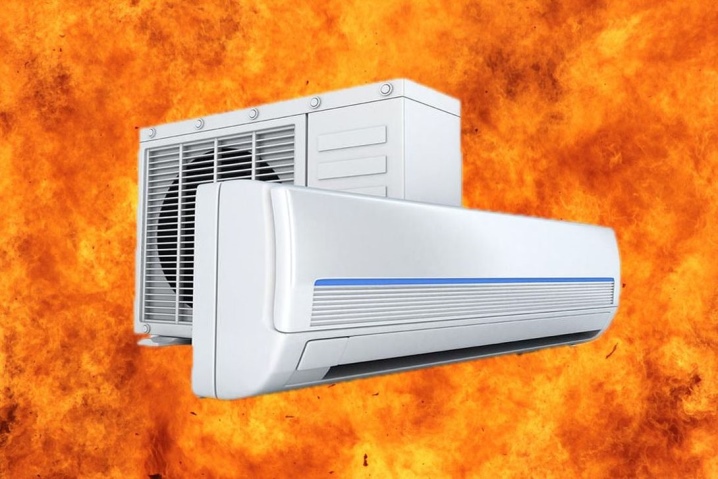
Functional overview
State-of-the-art air conditioners are often used in smart home systems. For the most complete solution of the tasks set, stationary and mobile climatic devices are equipped with additional functionality. Not all models come with a heating function in winter. Only two-circuit split systems, and even then not all, are designed to perform a similar function. The addition of a heat pump increases the cost of the product by 100-200 conventional units.
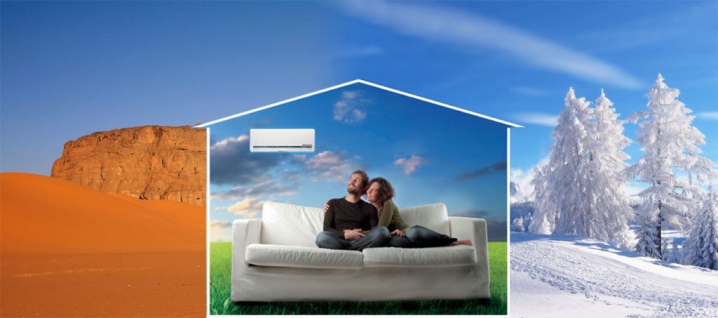
The role of the pump is to correct the direction of heat dissipation without connecting thermal elements. Efficient heating by means of an inverter can be carried out if the outside air temperature does not fall below -15 degrees. Important: if the system has a "warm" function, it will be able to heat the room even on days when the thermometer drops to -25 degrees. But sometimes a moisturizer is also present.Thanks to him, as already mentioned, the dry air characteristic of air conditioning systems is compensated.
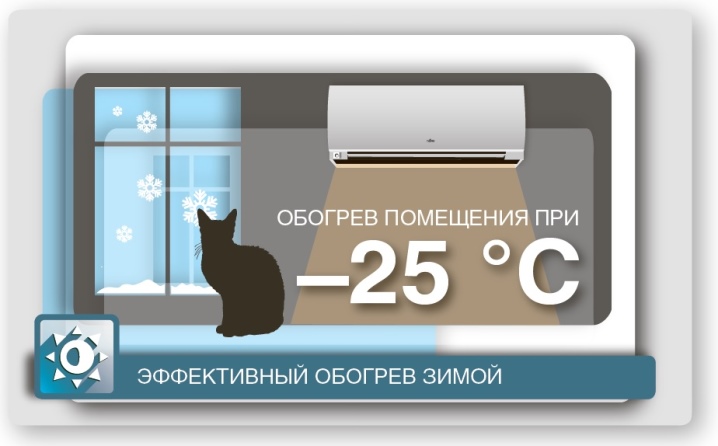
Almost all self-respecting manufacturers supply equipment with humidifiers. Some models of this kind are found even in the budget range.
Another attractive option is air conditioners with supply air function. This option is designed to cope with excess carbon dioxide and an unjustified drop in oxygen concentration. Such negative effects are only partially compensated; in order to improve the situation, it will be necessary to tighten the contours of the split system as much as possible and regularly ventilate the room. It should be borne in mind that the outside air has to be passed through additional filters. They allow you to avoid clogging the room space with toxic exhaust gases and the spread of foreign odors. In Russian conditions, supply systems are traditionally supplemented with air heaters. Powerful heating allows the equipment to work quietly throughout the year. Of course, the coordination of such a complex system is possible only when using debugged automation.
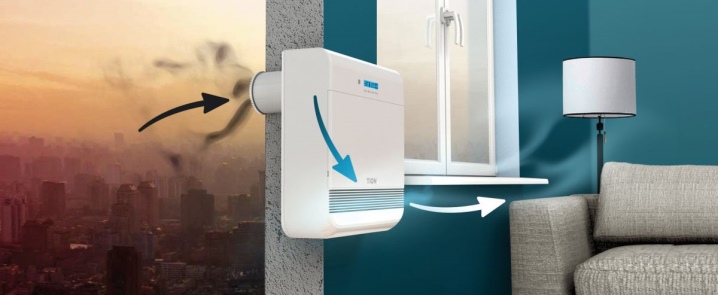
But air purifiers in air conditioners can also work "at the outlet". In this case, the air flow discharged into the street is freed from toxic and hazardous components. True, enhanced cleaning is achieved when the system becomes more expensive and its noise level increases. As for the emission of air coming from the street, some models, for example, Samsung AZ12PHHEA, can direct it in a horizontal plane. Rather, an adjustment is made in this plane. In the mentioned model, it is produced using a lever on the damper. Manipulations must be carried out carefully, otherwise there is a great risk of severely injuring the fingers.
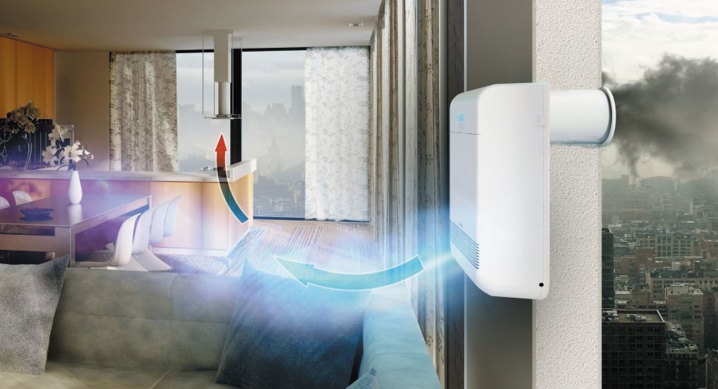
Advanced devices have an auto-swing option that allows you to achieve the highest user comfort. Sometimes there is a double auto-swing, which provides full control of air jets in both the vertical and horizontal planes. Therefore, the flow moves as evenly as possible.
Some air conditioners can be used for standby heating. In Russian conditions, such a mode cannot replace full-fledged heating, especially if you use inverter air conditioning equipment. However, it should be understood that the lower the temperature, the lower the efficiency of the equipment and the lower its power. It is advisable to use air conditioners not instead of conventional boilers, stoves or heaters, but in close connection with them.
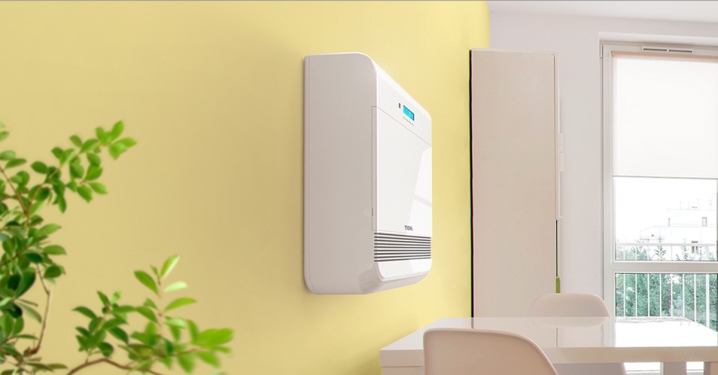
At the same time, the air conditioner maintains the minimum required amount of heat when there are no people in the house. When they arrive there, a full-fledged heating equipment is turned on, and a rapid heating of the air is achieved. To turn on in automatic mode, a presence sensor can be used - then you don't have to do anything on your own. It is reasonable to use air conditioners with an ionizer:
- in the children's room;
- in kindergarten;
- at school;
- in the office;
- in the production area.
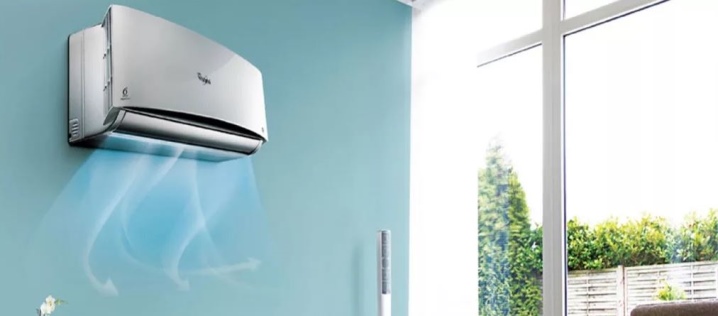
It is noted that ionization helps to reduce the prevalence of airborne infections. The air, saturated with ions, strengthens the immune system. This option is most appropriate for:
- children;
- old people;
- those who actively use household appliances and electronic equipment;
- everyone who is forced to stay indoors for a long time.
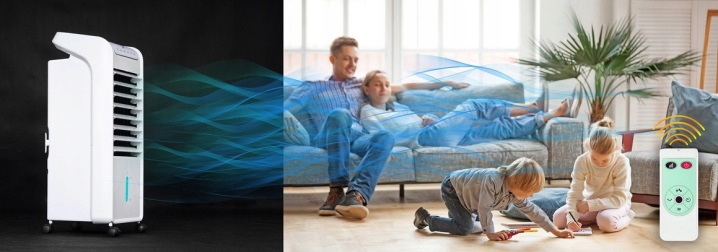
Some air conditioners have a wi-fi module by default, while others allow you to build it in with a direct request from the client. As a result, it becomes possible to control the device not only by commands from the remote control, but also through the program on the smartphone. Of course, the most advanced copies have this option, but it can also be found in simpler modifications. As for the air drying function ("Dry"), it helps to contain excessive moisture by distributing air jets. Freon pressure is adjusted using a special valve.
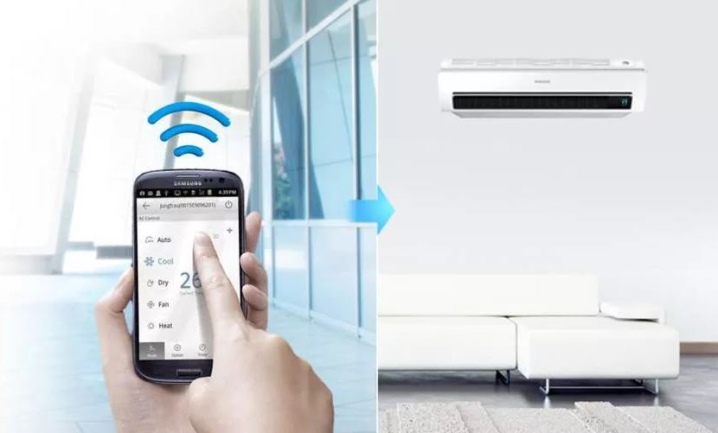
The I Feel function (sometimes it can be called differently) implies determining the actual temperature at the location of the remote control. Such a mode sometimes exists even in budget class models, but it is extremely truncated and has little functionality. As for air purification, it is carried out depending on how many filters are installed, and what kind of filters they are. Additionally, the following options may be present:
- adjusting the fan speed;
- high-speed decrease in temperature;
- night mode;
- timer (for setting the start or shutdown of the device for a certain time);
- energy saving;
- air purification with plasma;
- automatic cleaning of the indoor unit.
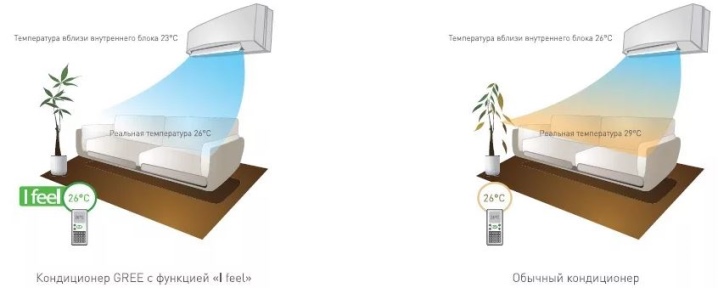
Rating of the best models
Inverter air conditioner now occupies a very good position. Mitsubishi Electric MSZ-LN25VG... The wall-mounted split system improves the microclimate on an area of 20 m2. Air drying mode and "quiet sleep" option are provided. Diagnostics occurs automatically. Automation ensures unconditional maintenance of the optimum temperature, and the sound volume during operation does not exceed 45 dB. The designers took care of memorizing the settings made, about the possibility of a warm start and about plasma air purification. There is also a built-in motion sensor. But there are also a number of disadvantages:
- very high cost;
- significant dimensions;
- display without night illumination.
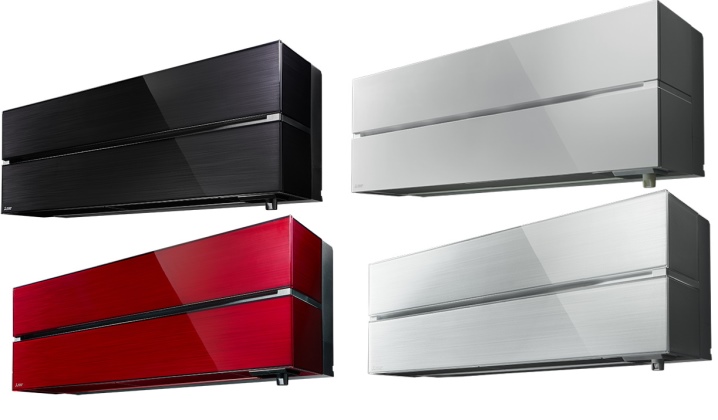
An excellent alternative can be considered Toshiba RAS-07BKVG-E... The device is designed to improve the air in rooms up to 20 square meters. m. In terms of functions, it differs little from the model just described and is also capable of operating in inverter mode. When cooling air, it will consume 2000 watts, when heating 2500 watts. The sound volume during operation reaches 23-38 dB, depending on the selected mode.

The device can work for heating, if the air outside has a temperature of at least -15 degrees. An interesting option is the carbon-kakhetian type filter. The fan can run at 5 different speeds. Anti-icing protection is provided. The manufacturer claims that only selected materials and state-of-the-art technologies are used in the manufacturing process. The disadvantages are as follows:
- the remote control does not have a backlight;
- with prolonged use, the plastic turns yellow;
- it is difficult to find the correct dehumidification settings;
- a lot of dust is collected.
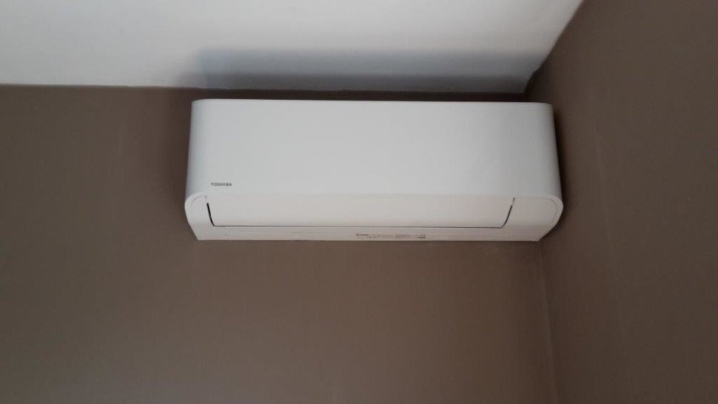
More powerful apparatus - Daikin FTXK25A / RXK25A... This is also a wall-mounted device, consuming 2560 watts in cooling mode and 2840 watts in warm-up mode. The direction of the air can be adjusted as desired. The settings are remembered very well. The total weight is 9 kg (inside) and 31 kg (outside). The product was developed in Japan, in fact, the assembly is carried out in Malaysia. To remove dust from the air, a mesh filter is provided. The standard operating temperature range is -15 to 46 degrees.
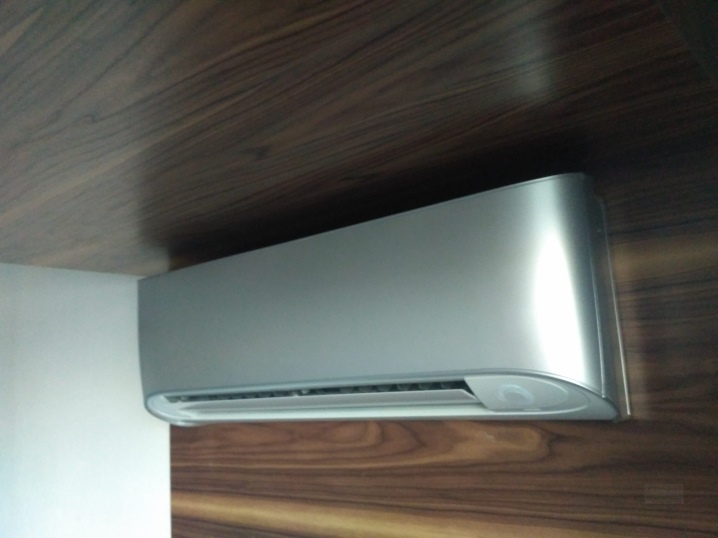
A fast response mode is provided. The brand warranty is given for 5 years. But the functionality is relatively modest. In addition, a user activity sensor is not provided.
From mobile monoblocks deserves attention Ballu BPHS-14H... When cooled, it consumes 1300 watts, and when warmed up, 1200 watts. The fan has 3 different spinning speeds; improvement of air quality in an area of up to 35 m2 is declared.
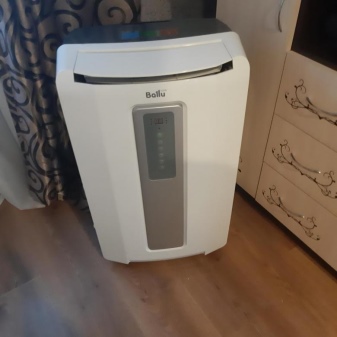
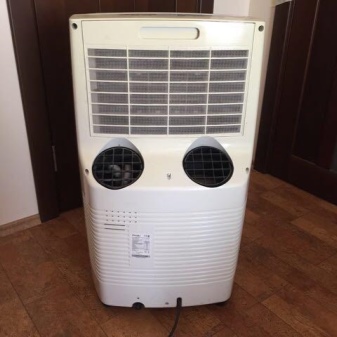
Another decent mobile candy bar - Electrolux EACM-16HP / N3 - designed for 44 sq. m. It can work in silent sleep mode. Control is possible not only through the remote control, but also by Wi-Fi technology. A start-up and shutdown timer is provided, and the fan speed can be adjusted. The total weight of the product reaches 35 kg.
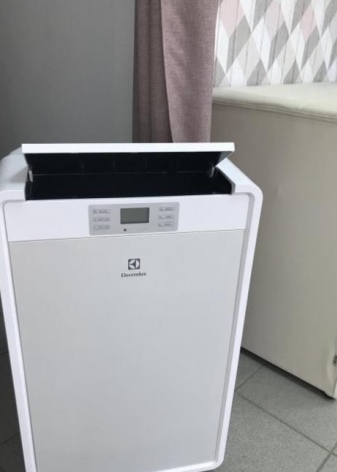
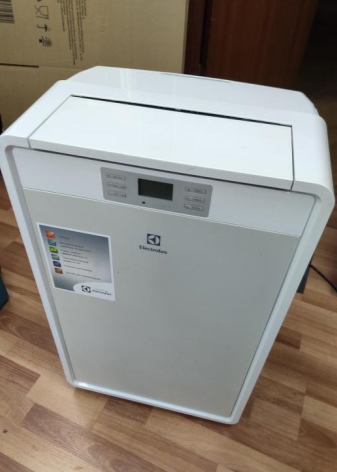
It should be noted that the device automatically evaporates condensate. Installation of this air conditioner is not required, but at the same time it is as functional as stationary samples. The noise is quite loud, but it is easy to get used to it.Of the obvious shortcomings, only a rather high price and dripping of condensate can be noted. If you need a wall-type multi-split system, then it is better to pay attention to Aeronik ASO / ASI-18 (09 + 09) HD.
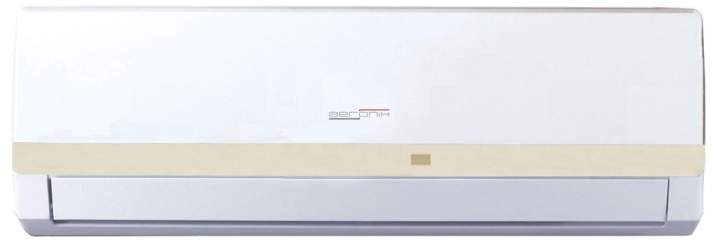
Selection Tips
When selecting household air conditioning equipment for an apartment or for a house, it is absolutely not enough to focus only on universal descriptions in various ratings. The most important point that is often overlooked is the “seasonality” of air conditioners. Some models are designed to provide coolness on hot summer days, while others are more focused on maintaining an optimal microclimate during the winter months. It is best to go shopping in the off-season when the cost of goods is significantly reduced.
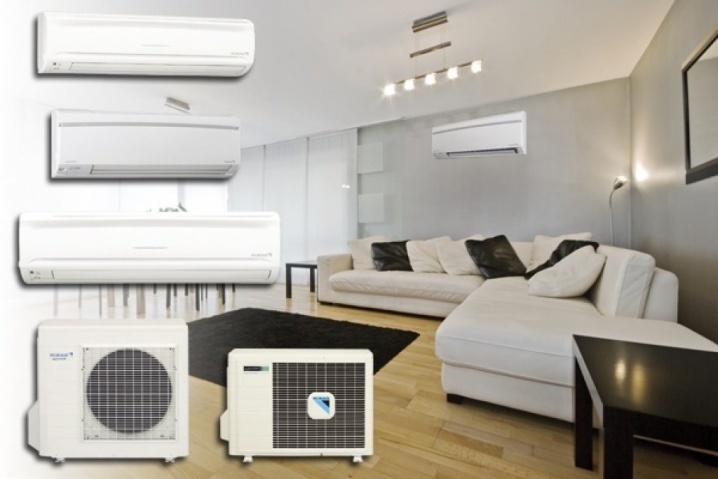
As for heating capabilities, then in a private house you need to choose a more powerful air conditioner. This is the only way to compensate for significant heat losses. However, it must be understood that the power of the device is largely limited by the characteristics of the wiring. Especially in the case when there are already other powerful electrical appliances. You need to select air conditioners in rooms separately.

Even if the rooms are not separated by doors, the circulation in every part of the house or other building still has special requirements. It is best to consult with a professional about them in advance. A well-designed air conditioning system project, as practice shows, saves a considerable amount of money and allows you to achieve an optimal effect in any conditions. When you only need to freshen the air a little, you can limit yourself to a simple budget model. The main thing is that it should be made at a plant with a good reputation, because little-known companies rarely supply high-quality equipment.

But for more serious purposes, you need to purchase modern energy-saving air conditioners. Thanks to them, reliable heating and cooling are provided equally.
As for mobile monoblocks, such equipment will be a good choice, except for rooms no larger than 25 square meters. m. In a larger space, they do not cope well with maintaining the required microclimate. In addition to the power and performance of the air conditioner, you should pay attention to what filters are used in them. Modern plasma filtration is especially effective against pathological microorganisms and allergic substances. However, the cost of devices where it is used will be clearly higher.
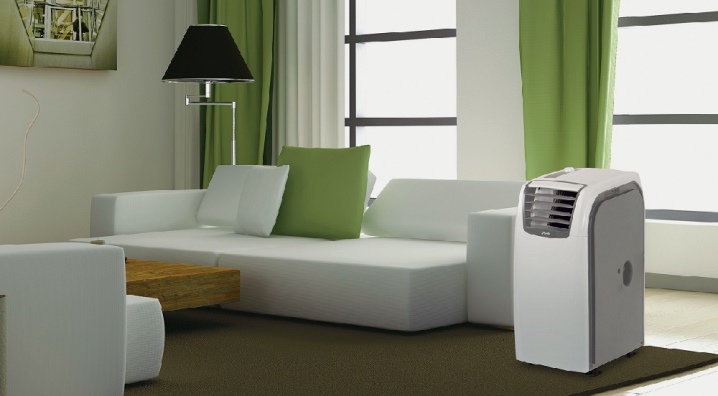
If a split system is preferable, one must also take into account the place where it will be installed. It is not possible to install bulky powerful blocks everywhere, and even in compliance with safety requirements. You shouldn't pay special attention to the country of origin. As practice shows, neither price nor quality almost depends on this. And one more nuance: it is advisable to choose those companies that not only sell, but also install climatic equipment - independent installation is possible, but too dangerous.
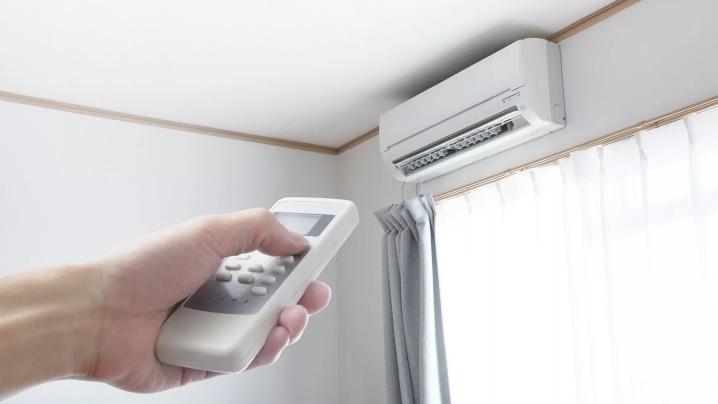
Exploitation
Whichever good air conditioner is chosen, improper use can cause a lot of harm. Using climatic equipment correctly means knowing exactly what temperature should be during its operation in summer and winter. It is necessary to focus on the limiting averages for meteorological data. A short-term (for 2-5 days even) deviation from the norm is not dangerous, it is dangerous when the device is used constantly in unsuitable conditions. Important: you should check the freon pressure in the air conditioner at least once every 30-40 days, and if it is not enough, fix the problem, pump up additional gas.

When using the device, it is imperative to lock the doors and windows so that the circulation takes place normally. The indoor unit is not designed for bright sunlight, so you need to place it where such rays will not hit.There must be a certain free space in front of the air conditioner. Its specific value is prescribed in the instructions, but if more can be done, then this should be done.
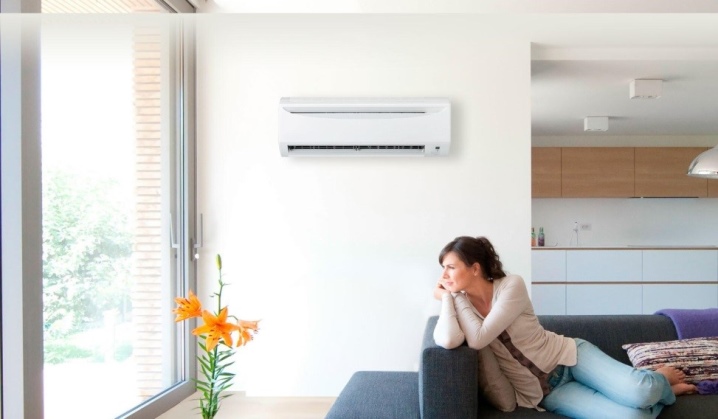
It should be understood that the air conditioner needs service measures. Once every 6-12 months, it will be necessary to call specialists to carry out diagnostics and, if necessary, replace the refrigerant. Service should only be entrusted to organizations and people authorized by the manufacturer or its authorized dealers. It is best to trust post-warranty service, as well as warranty, only to the subdivisions of the manufacturer (if possible).
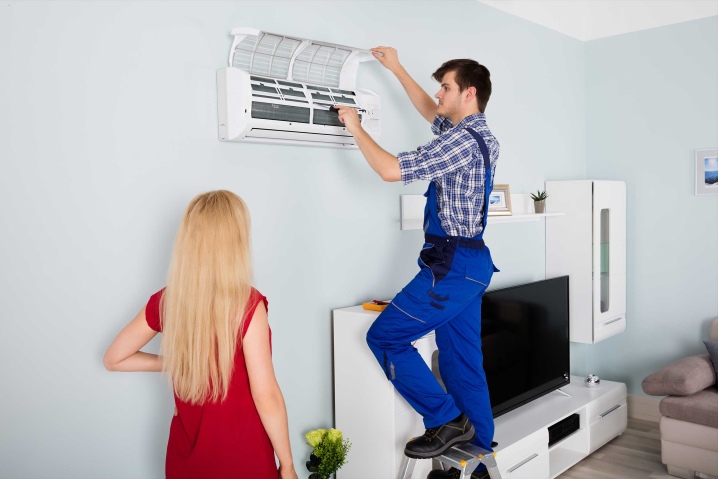
Filters can be cleaned on their own, and this should be done every 2-3 months. The outdoor unit, protected from the sun, rain, snow, covered with an anti-vandal grill, lasts longer.
Security
Regular cleaning of the indoor unit not only removes unpleasant odors, which cause aesthetic inconvenience and create emotional stress. It also allows you to ensure high efficiency of the equipment in comparison with contaminated specimens. Moreover, if you do not clean the indoor unit for a long time, colonies of pathological organisms can form there. But this is not enough. Each air conditioner must have a power line with a separate electrical protection device.

In this case, the presence of residual current devices for the electrical network of the building as a whole does not play a role. It is very important to ensure that the wire size is correct for the maximum load. The following should not be located near the air conditioner (within a radius of 1.5 m):
- tree branches;
- climbing plants;
- flammable liquids;
- cylinders with natural and liquefied gas;
- structures containing flammable parts and finishing materials.
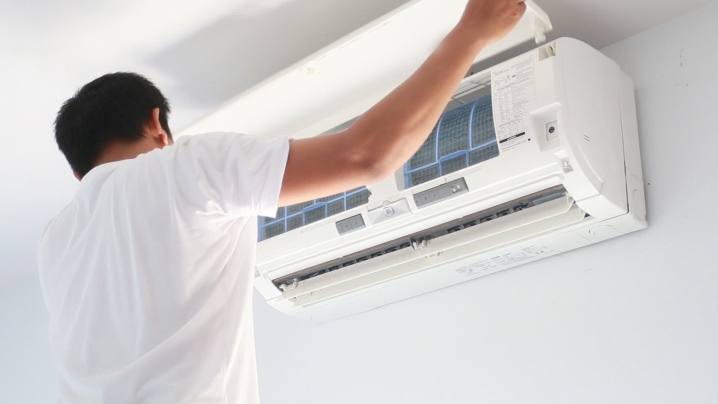
The air conditioner can be installed in a multi-storey building only if it is covered with canopies made of non-combustible materials. The visors must be at least 0.15 m outside the device contour. Every effort must be made to prevent foreign objects from getting inside the climate system. It is highly undesirable to use the air conditioner where it is very humid or dusty - then it is not effective enough and wears out quickly in addition.
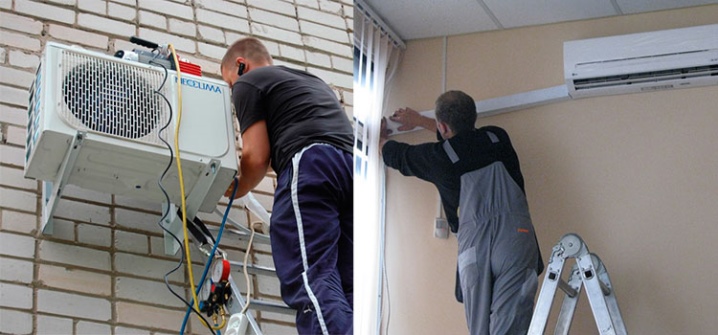
Safety requirements indicate that you need to mount the air conditioner only on metal parts, preferably factory-made. Strictly prohibited by any manufacturer (and with good reason):
- change the functionality of the device;
- add or remove some details;
- connect the device without grounding;
- change wiring or plugs;
- attach the air conditioner to the firewall;
- use it in production facilities of category A or category B.
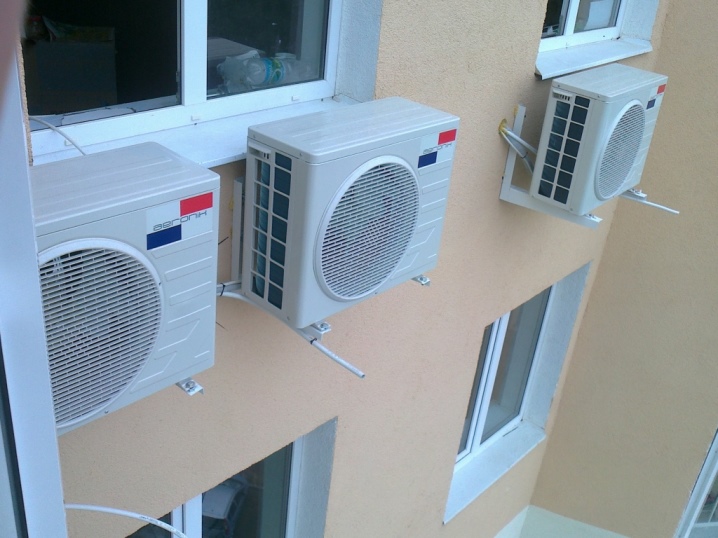
What is the optimal room temperature?
Advanced climate technology sometimes cools down to fairly low temperatures. But in order not to get sick with respiratory diseases, strict restrictions must be observed. In winter, it is necessary to maintain the air temperature at 18 degrees. Only then are optimal conditions from a physiological point of view created. But you need to understand that along with general hygiene requirements, your own preferences are also important.
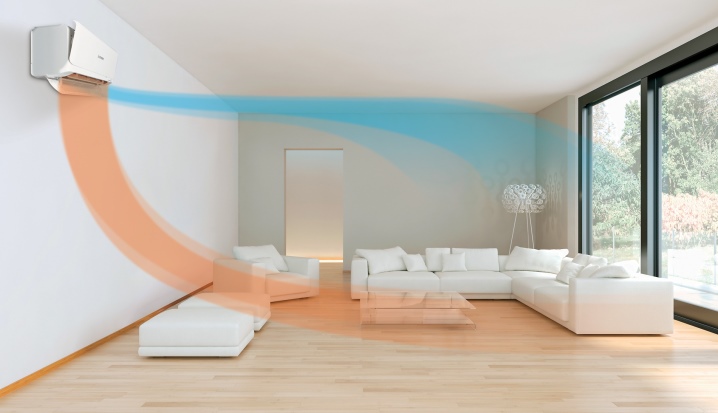
So, in the summer, someone calmly tolerates the heat, while others feel bad even at 25-26 degrees... One has to in a family or in a work collective inevitably look for some kind of compromise. At night, the bedroom should be maximum 18 degrees, otherwise insomnia and severe fatigue are likely. In the nursery for a small child (up to 3 years old), it should be about 24 degrees, and at an older age, the temperature should be maintained at about +21. In living rooms, it is worth providing a temperature of 19 to 21 degrees.
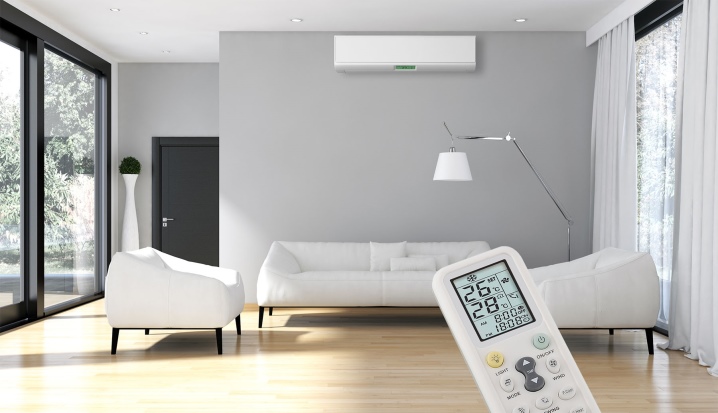
Bathrooms need more powerful heating. After all, in a naked state, the cold air causes serious discomfort.But in the kitchen, even in winter, it is impractical to use intensive heating. Comfortable conditions are considered 19 or 20 degrees. Attention: the temperature difference between separate rooms should not be more than 2 degrees, otherwise there will be strong emotional and physiological discomfort.

Frequent malfunctions
No matter how correctly the air conditioner is selected, no matter how carefully it is operated, there is still a high probability of various breakdowns and violations. If the indoor unit seems to be working (the blinds can be opened and the fan turns), but there is no cold, first you need to check if the correct settings are specified for this device. Next, it is assessed whether the requirements for the permissible temperature are not violated. It also happens that water flows out of the inner segment of the air conditioner. Inoperability is often associated with the leakage of an unreasonably large amount of freon to the outside. If the air conditioner cannot be started at all, you need to contact a professional. Only they can eliminate:
- defects in the starting capacitor;
- burnt compressor contacts;
- deformation of temperature sensors;
- compressor wear;
- malfunctions in the control electronics.
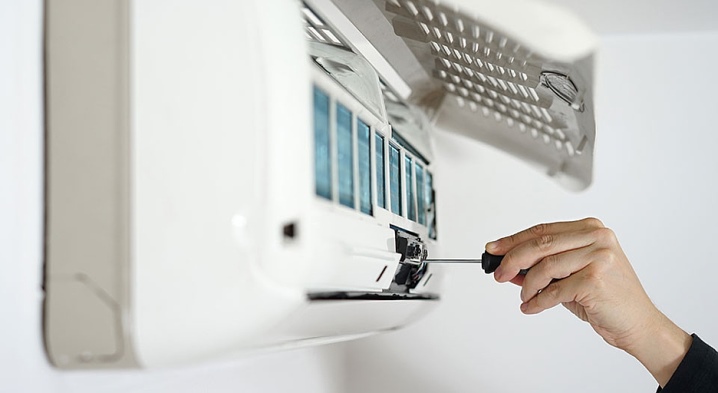
The drainage tray or hose is often clogged. In this case, the inside is disassembled and all parts are carefully cleaned. Sometimes it is possible to encounter malfunctions when collecting condensate. Like a drainage problem, this problem will result in fluid leaking out. Troubleshooting is difficult - you usually have to disassemble and examine all the internal components.
Sometimes the inability to turn on the air conditioner is associated with malfunctions of the remote controls or simply with the exhaustion of the battery life. Only after making sure that both reasons have nothing to do with it, it makes sense to examine the device further. But there is another problem - when the climatic apparatus first starts up, and after a while it stops. This may be due to the following factors:
- electronics defects (the most difficult situation);
- loss of a significant part of freon;
- overheating of the compressor unit;
- malfunction of the fans;
- the appearance of dirt in the capillary tube and other harmful factors.

Advice
Professionals note that air conditioners with a heating option, contrary to popular belief, are quite reliable. This option only affects the effectiveness of use.
- One more nuance - you need to pay attention to the total number of functions. The more of them, the less noise the air conditioner will make during operation.
- Experts strongly recommend every year, starting from the 3rd, to carry out a full-fledged routine maintenance. It should include not only the search for refrigerant leaks, but also the cleaning of filters, heat exchangers, a test for standard operating parameters.
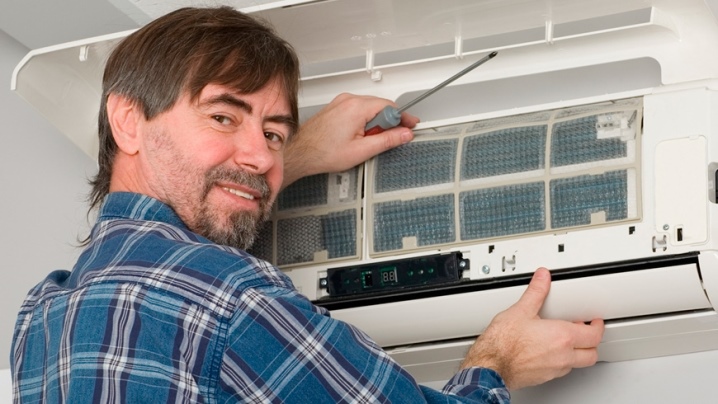
For information on how to choose the right air conditioner, see the next video.













The comment was sent successfully.